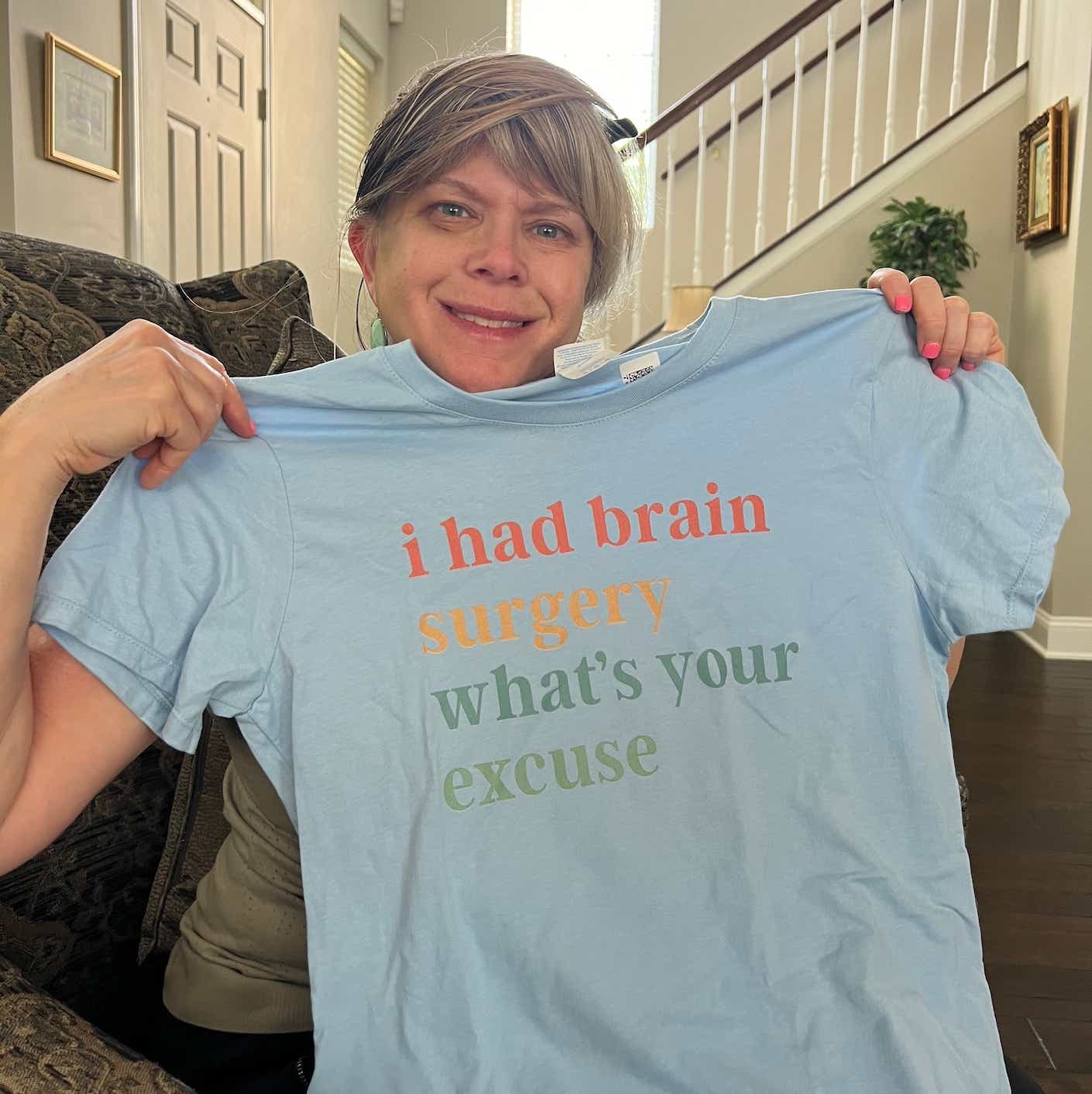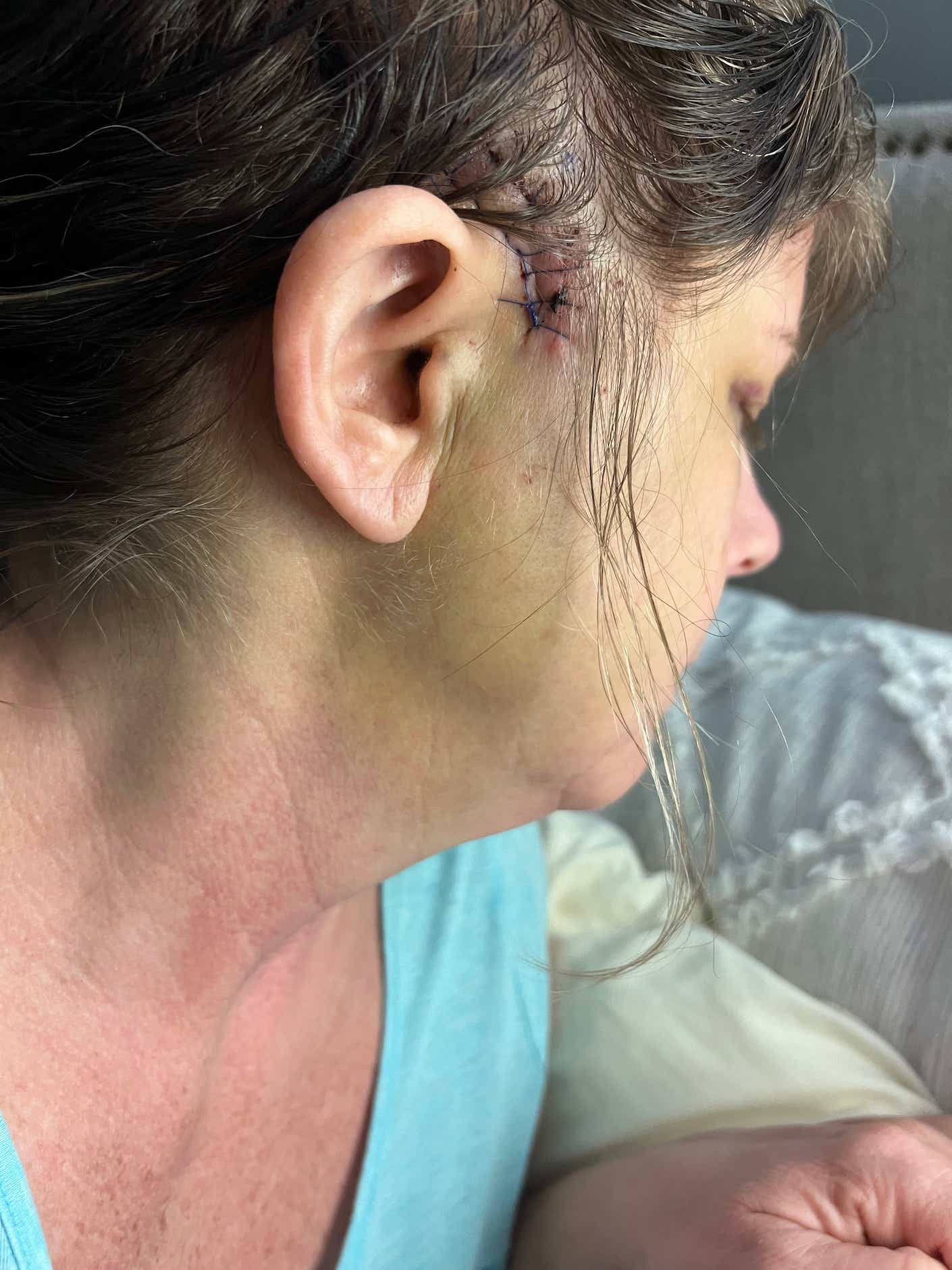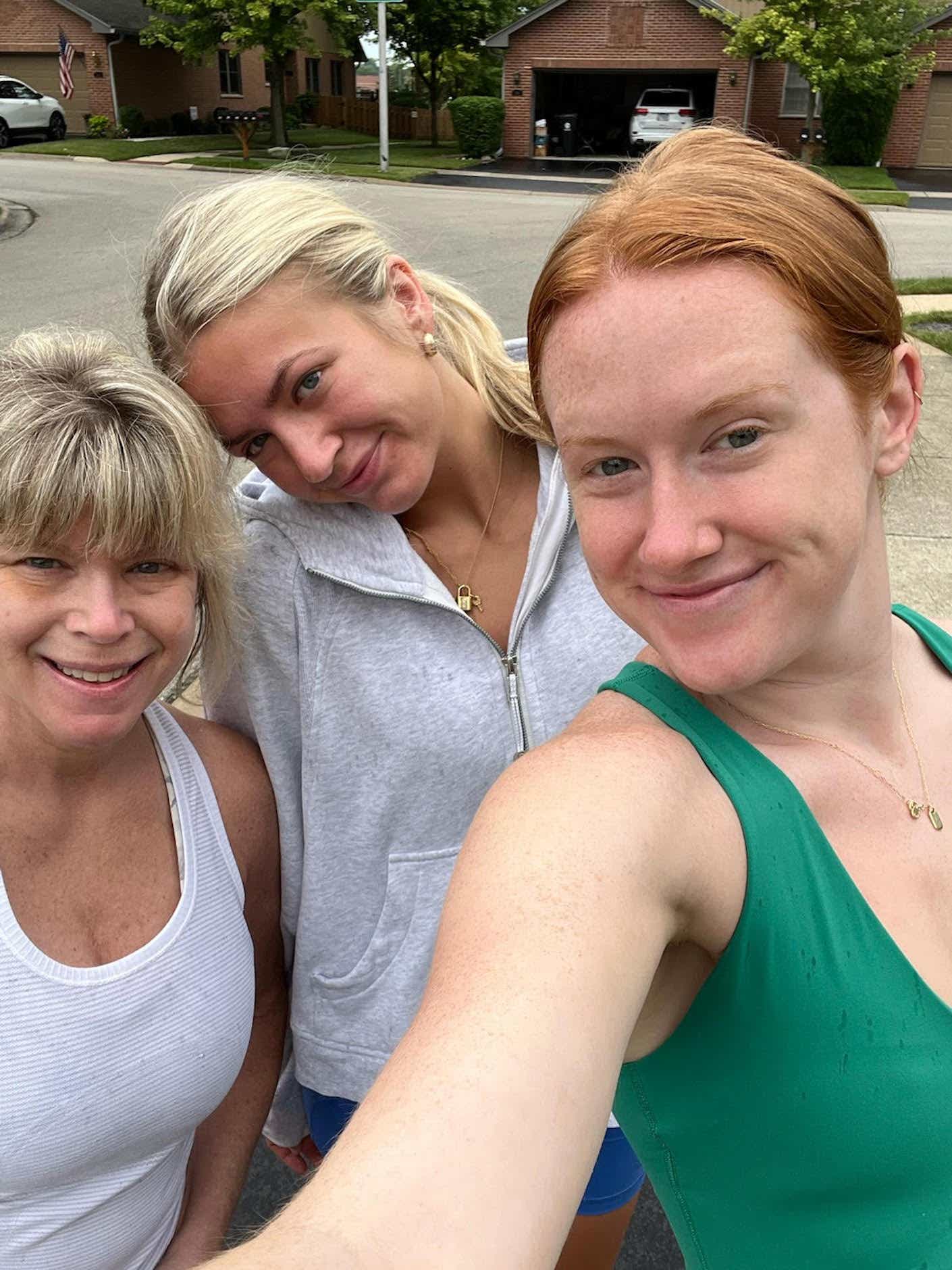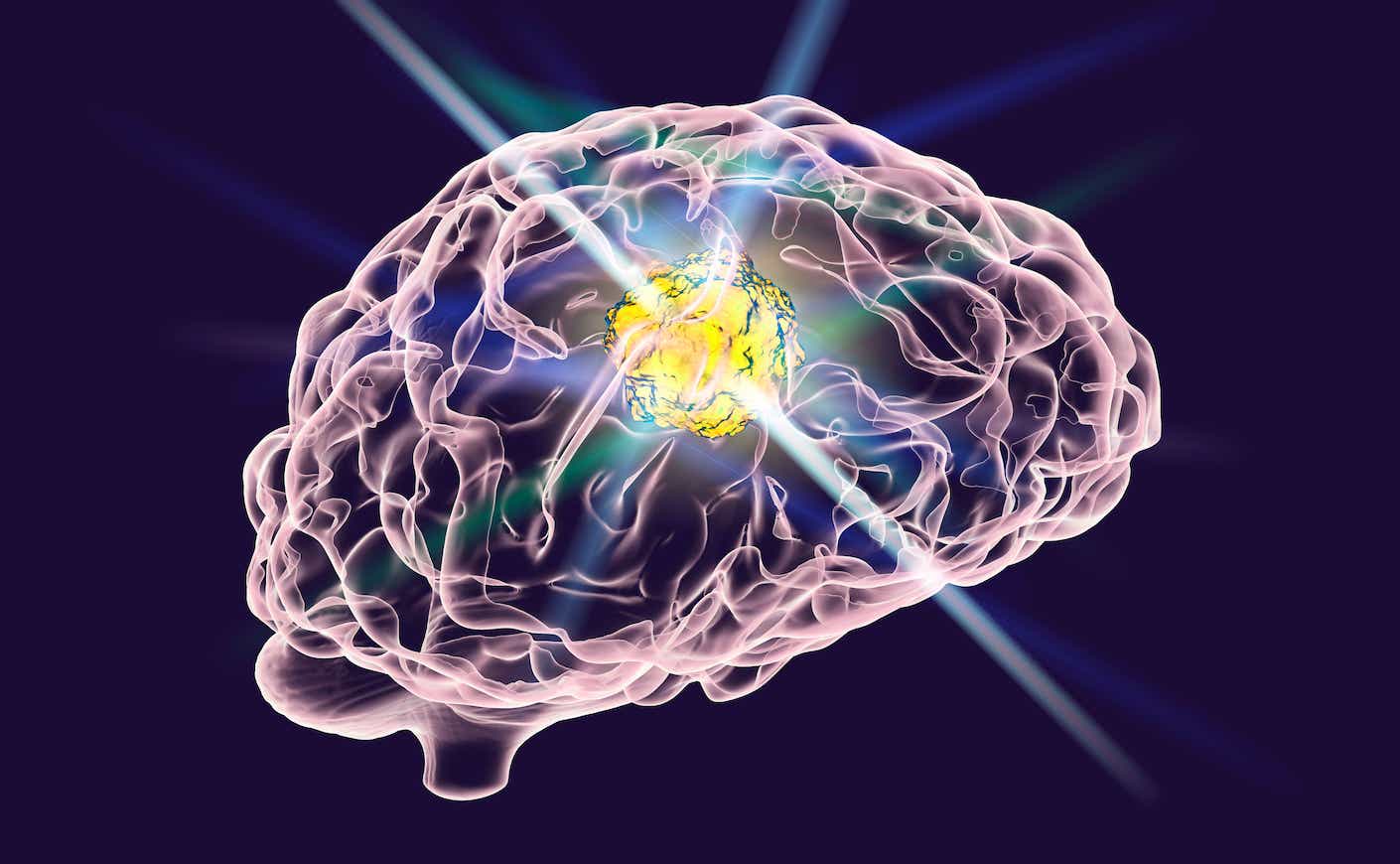I have always been a believer in listening to your body, and that if something doesn’t feel right, you should reach out to your doctor and say something. I never thought that mindset would lead me to the ER, with a CT scan showing that I had a walnut-sized tumor in the right frontal lobe of my brain. But three weeks ago, that’s exactly what happened.
I’m an active and healthy 55-year-old woman. I’ve run two Chicago marathons and, until recently, went to fitness classes multiple times a week. I eat healthy and have no major underlying health conditions. I’ve kept up with all my wellness exams, including my colonoscopy (I’m on the 5-year plan) and yearly mammograms.
About three weeks ago, I began feeling a little “off” and experiencing heart palpitations at work. At first, I thought that it was indigestion, but the palpations didn’t get any better throughout the day. I went home and told my husband, who suggested I put on his smartwatch and track my heart rate. My heart rate was normal, potentially showing an extra beat. I told my sister, and she suggested it could be anxiety. I tried to chalk it up to that and went to bed that night and to work the next day. I even agreed to meet my daughter Taylor for a fitness class after work but decided I’d go slow instead of giving it my usual 100 percent. But after the workout, I felt worse. The left side of my jaw was kind of numb, and my left shoulder and arm were very sore. I was scared and initially thought it could be a heart attack.
When I got home, I told my husband it may be nothing, but I wanted to go to the nearby urgent care center to check it out. Would this end up being an unnecessary and large medical bill for what turns out to be an anxiety attack? I wasn’t willing to take a chance. As I always do, I listened to my body.
At urgent care, they took some blood samples and determined that I was not having a heart attack, and at that point, I started to feel a little dumb for wasting time and money. But my body was still telling me something was wrong. Call it “divine intervention,” the luck of getting a great doctor at that Urgent Care, or both: He suggested going to the ER at the nearby hospital to follow the stroke protocol, which would include a CT scan. We agreed, and that urgent care doctor saved me.
Once at the hospital, I underwent a CT scan to rule out a stroke. I was sure they were going to find nothing and send me home.
An hour later, a doctor confirmed I was not having a stroke or an anxiety attack. But there was a 2 mm lesion on the right front side of my brain.

I couldn’t process this. Was I hearing it correctly? A brain tumor? So many questions ran through my mind, starting with, is this real?
It must be a mistake, I thought next. And then: How am I going to tell my daughters without freaking them out?
My husband had tears in his eyes; he was scared, too.
The doctor could not answer my question, “Could the tumor be cancerous?” She could only say, “An MRI will have to be done to determine next steps in consultation with a neurosurgeon.” I had a feeling she had seen this type of tumor before and didn’t want to add more anxiety to my fears that this could be a life-changing event.
The next 24 hours were a blur. I went from doing a fitness class with my daughter to being transferred to the Neurology ICU right after the tumor was discovered that evening. In the Neurology ICU, I was administered anti-seizure medication just as a precaution. I then had an MRI in the middle of the night and early the next morning and a consultation with the neurosurgeon, who explained that normally these types of tumors are discovered when they’re much larger than mine when the patient has a major seizure.
Because I listened to what my body was telling me, instead of a seizure landing me in the hospital weeks or months from now with a baseball-sized mass in my brain, the neurosurgeon felt I had a much more operable tumor.
Again, I asked, “Is it cancerous?” The surgeon would only say, “It could be, but let’s get it out and go from there.” What made me feel optimistic was that the surgeon said since I was extremely healthy, in good shape, and had no underlying health conditions, recovery from the surgery would be easier. The tumor was also on the right side of my brain, so I would not lose mobility or any cognitive skills after surgery.

I had surgery that night and was up walking around the next day, and discharged the day after that. I was still in disbelief and so scared that this could be the end of my life, but I found so much support in my family and friends, who rallied around me.
The surgery was successful and removed all of the tumor, but this is an aggressive type of cancer, and it could come back at some point.
A week later, I had my staples removed and my first oncology appointment, where the oncologist confirmed that the tumor was a high-grade glioblastoma — the most common primary brain cancer in adults. Glioblastoma is a rapidly growing tumor that can occur at any age, but the chances increase with age. The standard protocol for this type of tumor was six weeks of radiation and a high-dose chemo pill, followed by six rounds of chemo. Then, the grand finale! I get to shave my head and wear the OPTUNE GIO up to 20-24 hours a day for an indefinite amount of time. The OPTUNE GIO is a wearable device that helps deliver Tumor Treating Fields (TTFIELDS) therapy through adhesive patches placed on your head. My oncologist said this was a preventative plan of attack.
Still, it was too much to comprehend. Trust me when I say you do not want to Google “glioblastoma.” The rate of survival over two years is not great. I was scared, to say the least, but angry, too. How is this happening to me? I wondered. What did I do wrong? I need to be here for my daughters, their weddings, the birth of their children.

I did not ask what my projected life expectancy is. Maybe the oncologist was reading my mind because he looked at me and said each patient’s journey is different based on how healthy they are and how they handle the treatments.
I pushed the fear aside and decided I would face this as if I were training for the Chicago Marathon. When training for a marathon, you tackle one day and one mile at a time. You keep your focus and work through the pain. My thoughts shifted to, I’m strong and positive that I’ll survive. I will see my girls walk down the aisle and see my grandchildren one day.
Listening to my body got me to the hospital that day, which led to the discovery of a small tumor and a successful surgery, and more time to fight and to live. I have a village of family and friends supporting me each step of the way, especially my daughters Ashley (23) and Taylor Grace (20).
I hope my story not only pushes that person who feels “off” to get checked out but also highlights the need to continue to raise funds for brain cancer research. Doctors have come so far with treatments to help prolong the lives of otherwise healthy individuals who are hit with this terrible disease.
For now, I’m focused on training for this new type of marathon so that I’ll be here for my daughters for years to come.
For more information on how to support brain cancer research, visit www.abta.org









